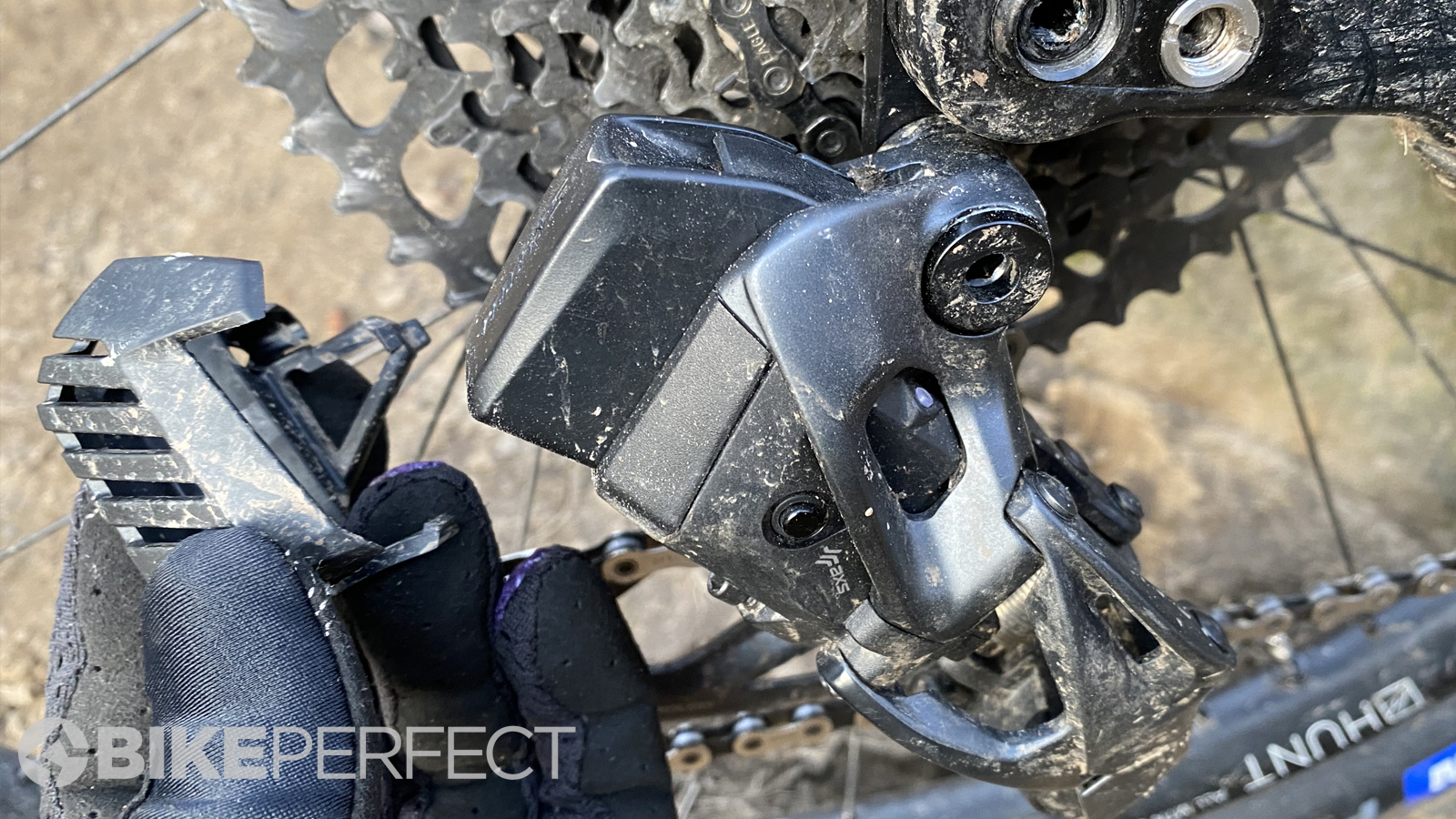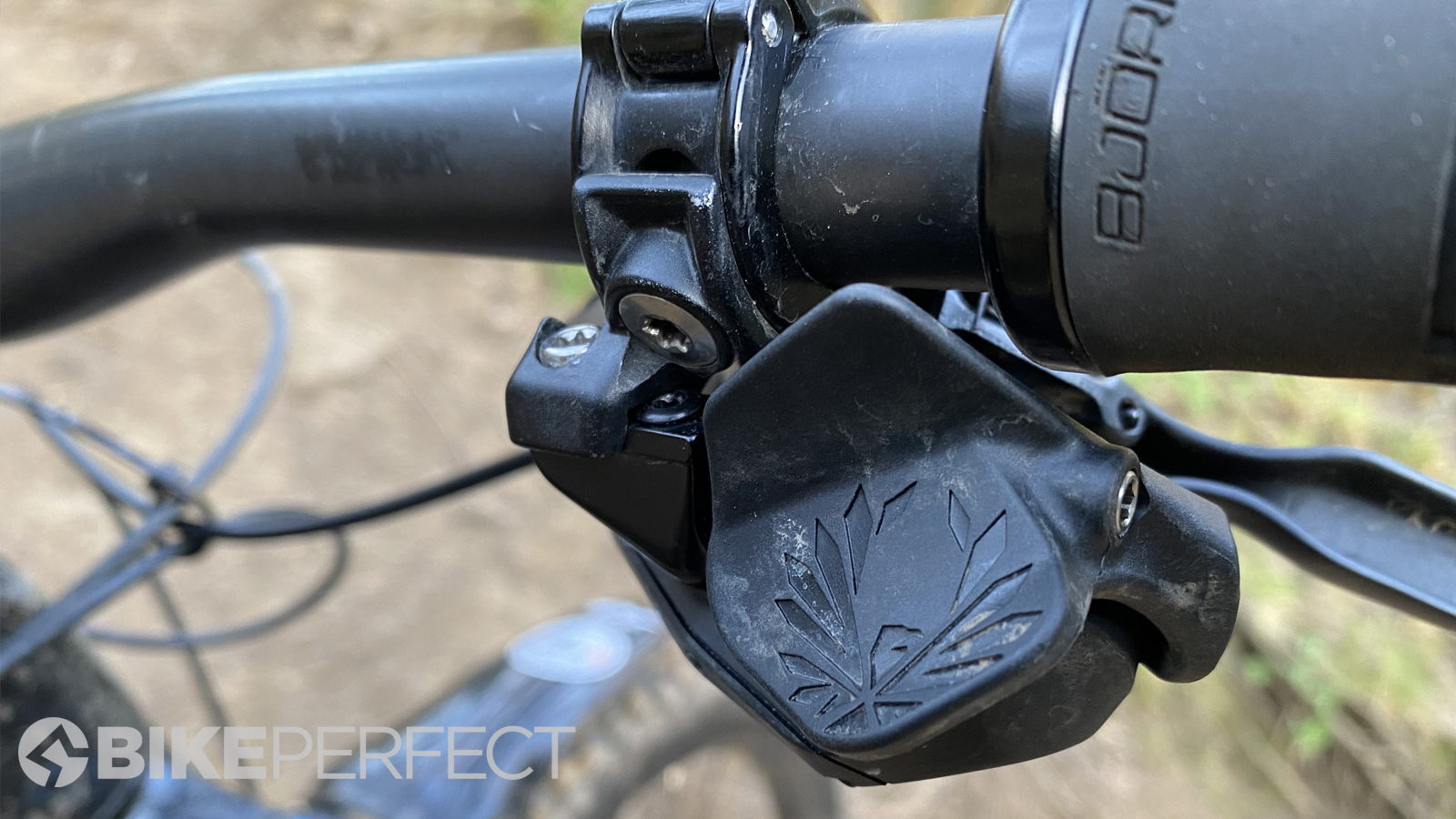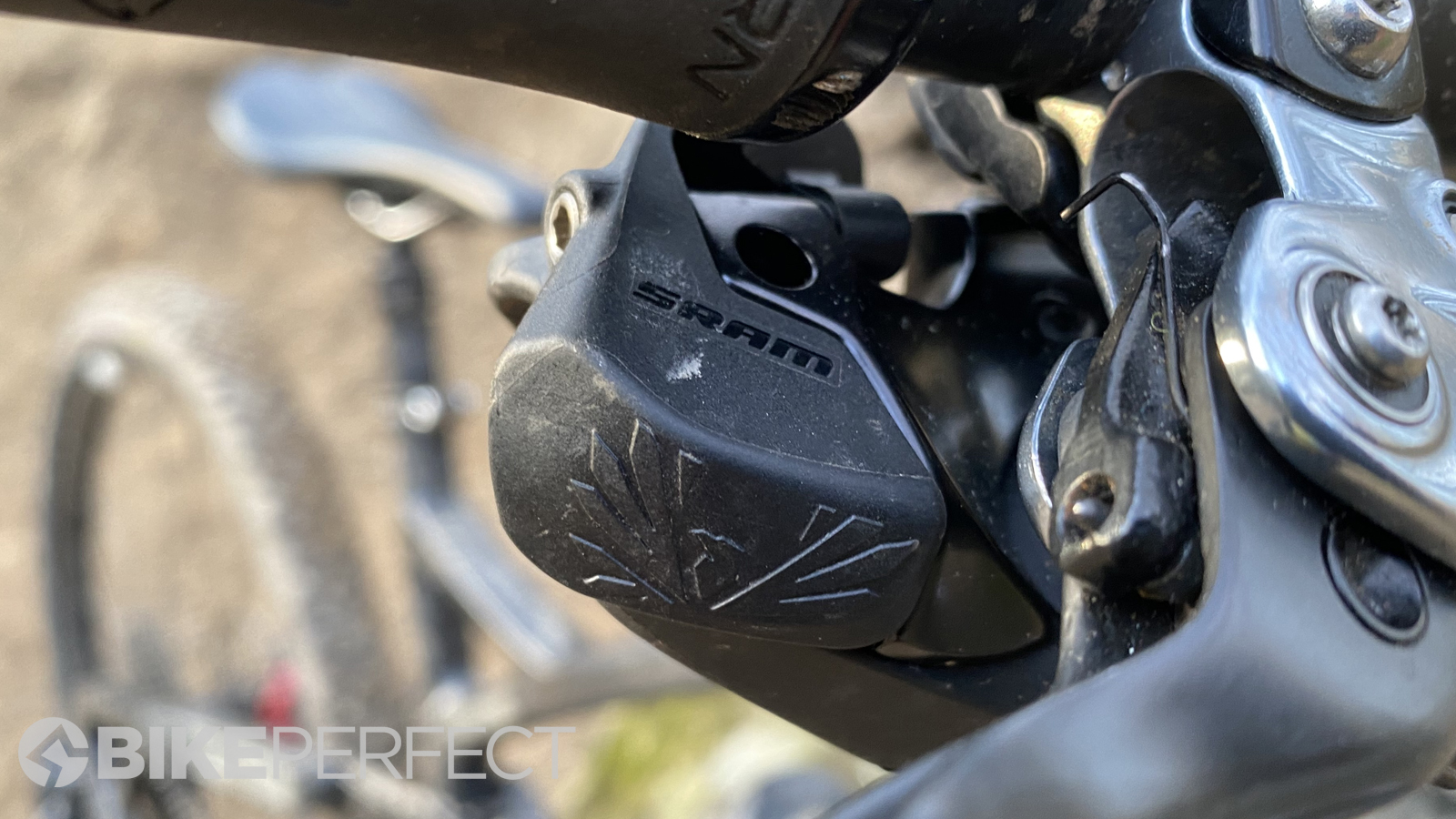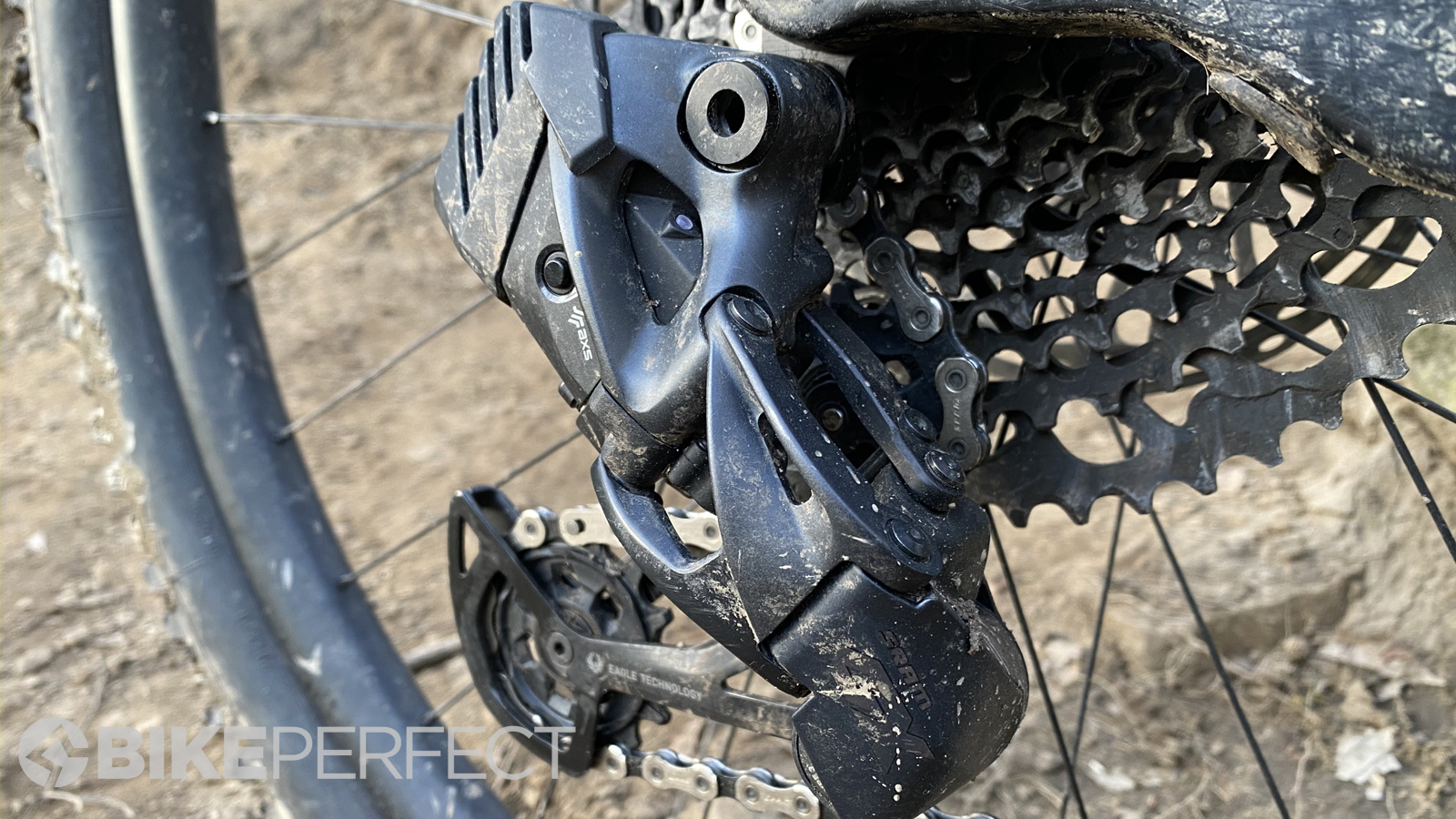Bike Perfect Verdict
GX1 is the cheapest, toughest AXS yet and still offers flawless wireless performance and convenience with masses of custom configuration options. The shifting game just changed for a lot more people
Pros
- +
Next-level shifting even under power
- +
Cheapest AXS group by far
- +
Excellent, tuneable ergonomics
- +
Same AXS components as premium sets
- +
Tougher steel jockey cage
- +
Optional battery cover
- +
Smart damage dodging features
- +
Full data download option
Cons
- -
Still not cheap
- -
Sightly heavier than standard GX
- -
Light shift feel won’t suit everyone
Why trust BikePerfect
SRAM’s GX1 AXS has opened up access to its wireless wonderland for more riders than ever and while we’d still hesitate to call it affordable its precise performance, clean ergonomics and impressive practical toughness make it a seriously addictive way to shift.
- Best MTB groupsets: the best mountain bike groupsets tested
- Best mountain bike cranks: the best MTB cranks for any budget
Build and set up
SRAM introduced the wireless XX1 and X01 Eagle groups roughly a year ago and GX1 uses the exact same proven electrical, motor, gearbox, transmitter and battery. Body material, pivot bushings and bearings are slightly cheaper than XO1 but the differences are much less dramatic than previous generations. That makes the only significant difference in the steel jockey wheel cage on the rear mech that takes its weight up to a hefty 466g (78g more than X01 AXS).
Those changes allows SRAM to sell the upgrade kit (mech, shifter, battery, charger and rear mech set up gauge) for €210 cheaper than X01 though. Plus while the rear mech is 136g heavier than the non-AXS version, when we unbolted the full set up - including inner and outer cables and heavier shifter - the weight difference was only 46g. The steel lower cage is also tougher than the more expensive mechs and you can get an optional clip-on battery protection cover.

Installation couldn’t be easier either. Bolt-on the rear mech, set up the stop screws and B tension screw using the clip-on white template. Bolt-on the shifter pod using a SRAM matchmaker direct mount or the ‘in case you don’t use SRAM’ bar clamp they thoughtfully supply. No cables, no fighting with internal routing, frayed ends or crimped nipples, no overshooting, just blissfully simple bolt it on and clip in the rear-mounted battery.
Now press the button on the rear mech and shifter to pair them together. There’s a nudge adjust function if you need to fine-tune indexing, too, and communication between AXS components has been flawless every time we’ve used them. Download the free AXS smartphone app and you can configure the ‘butterfly’ rocker switch and front edge ‘Nino’ (named because it was requested by XC legend Nino Schurter) button to operate whichever way round you want. You can get battery charge information as well, although there is a low warning flashing light mode on both mech and shifters. The app also feeds into SRAM’s Web AXS for even more ride data display and detailed shift and usage feedback.


Performance
There’s definitely an adjustment process from conventional long-throw mechanical shifts to the very slight movement (particularly of the upper tab) required to initiate a gear change. We’d definitely advise moving your thumb if you’re used to resting it on the shifter otherwise it’s very easy to shift accidentally on rough tracks. It’s reasonable to say that some riders won’t actually like the minimal movement and sometimes imperceptible shifts compared to swing and positive clunk of a mechanical trigger but once you’re tuned in though the shifting is fantastically precise. There is occasionally a slight hesitation as it waits for the optimum shift window but that means chain moves are consistently clean even under serious pedaling torque.
From experience, it stays that way however filthy things get and the cage architecture means the rear mech actually has 10mm more ground clearance despite using the same super-wide ratio 520% range 10-52T cassette. An ‘Overload Clutch’ de-clutches the gearbox if the mech gets hit from the side, too, letting it go with the blow to reduce the chance of damage before automatically returning to the previous position.
The whole setup is IPX7 waterproofed and we’ve seen utterly fossilized and seriously scarred AXS rear mechs that are still working fine and our own experience of all levels of MTB AXS have been totally trouble-free. While the 20-25 hour battery life sounds short, low battery alerts on the rear mech LED and via the app give you plenty of warning and recharging is super fast. All AXS components from the MTB, gravel and road ranges can all interact happily to create all sorts of hybrids. That means you can use this upgrade kit with any analog SRAM Eagle group from XX1 own to SX. There’s an AXS operated Reverb dropper post too if you love the wireless cleanliness so much you want both bar sides clutter-free.

Verdict
It’s still an indulgence rather than an essential, but we guarantee if you try it you’ll struggle to feel the same way about conventional wired shifting ever again. Surgically precise, reliable and efficient shifting, minimal movement ergonomics, super simple plug and play set up and cross-platform versatility with impressive real-world durability delivers genuinely next-level shifting performance at a much more affordable price.
Tech Specs: SRAM GX1 Eagle AXS
- Price: $600, £554, €620
- Weight: Rear mech 466g, shifter pod with clamp 78g (68g without clamp)

Guy Kesteven has been working on Bike Perfect since its launch in 2019. He started writing and testing for bike mags in 1996. Since then he’s written several million words about several thousand test bikes and a ridiculous amount of riding gear. He’s also penned a handful of bike-related books and he reviews MTBs over on YouTube.
Current rides: Cervelo ZFS-5, Specialized Chisel, custom Nicolai enduro tandem, Landescape/Swallow custom gravel tandem
Height: 180cm
Weight: 69kg

